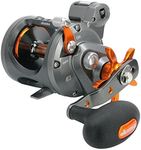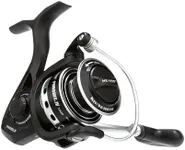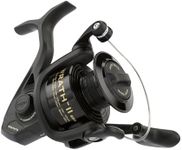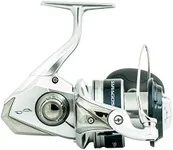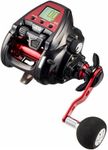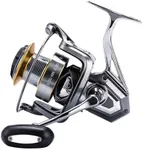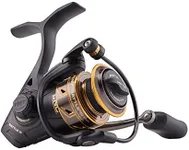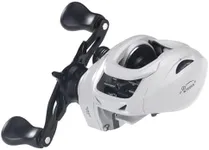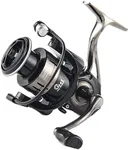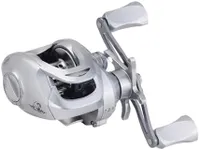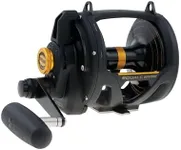Buying Guide for the Best Saltwater Fishing Reels
Choosing the right saltwater fishing reel is crucial for a successful and enjoyable fishing experience. Saltwater fishing reels are designed to withstand the harsh conditions of the ocean, including saltwater corrosion and the strength of larger fish. When selecting a reel, it's important to consider various specifications to ensure it meets your needs and preferences. Here are some key specs to consider and how to navigate them.Reel TypeThere are three main types of saltwater fishing reels: spinning reels, baitcasting reels, and conventional reels. Spinning reels are user-friendly and versatile, making them ideal for beginners and light to medium fishing. Baitcasting reels offer more control and accuracy, suitable for experienced anglers targeting larger fish. Conventional reels are designed for heavy-duty fishing and deep-sea angling. Choose a reel type based on your skill level and the type of fishing you plan to do.
MaterialThe material of the reel affects its durability and resistance to corrosion. Common materials include aluminum, graphite, and stainless steel. Aluminum reels are strong and lightweight, making them a popular choice. Graphite reels are lighter and more resistant to corrosion but may not be as strong as aluminum. Stainless steel components are highly resistant to corrosion and provide added strength. Consider the fishing environment and the importance of weight and durability when choosing the material.
Drag SystemThe drag system controls the amount of resistance a fish feels when it pulls on the line. A smooth and reliable drag system is essential for preventing line breakage and successfully landing fish. Drag systems can be front or rear, with front drag systems generally offering more precise control. Look for a reel with a high-quality drag system that provides smooth and consistent pressure. The drag power should match the size and strength of the fish you are targeting.
Gear RatioThe gear ratio indicates how many times the spool rotates with each turn of the handle. A higher gear ratio means faster line retrieval, while a lower gear ratio provides more power for reeling in heavy fish. Gear ratios typically range from 4:1 to 7:1. For fast-moving fish or techniques requiring quick line retrieval, a higher gear ratio is preferable. For larger, stronger fish, a lower gear ratio offers better control and power.
Line CapacityLine capacity refers to the amount of fishing line the reel can hold. It is usually measured in yards and varies based on the line's thickness. Larger line capacity is important for deep-sea fishing and targeting big fish that make long runs. Ensure the reel's line capacity matches the type of fishing you plan to do and the size of the fish you are targeting. Consider the depth of water and the potential length of the fish's run when choosing line capacity.
Ball BearingsBall bearings in a reel contribute to its smoothness and overall performance. More ball bearings generally mean smoother operation and better durability. Reels can have anywhere from 2 to 12 or more ball bearings. For a smoother and more enjoyable fishing experience, look for reels with a higher number of quality ball bearings. However, the quality of the bearings is more important than the quantity, so prioritize reels with high-quality, corrosion-resistant bearings.
WeightThe weight of the reel affects the overall balance and comfort of your fishing setup. Lighter reels are easier to handle and reduce fatigue during long fishing sessions. However, heavier reels often provide more strength and durability. Consider the type of fishing you will be doing and how long you will be holding the rod. If you plan on fishing for extended periods or using lighter tackle, a lighter reel may be more suitable. For heavy-duty fishing, a slightly heavier reel may be necessary.

